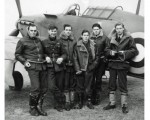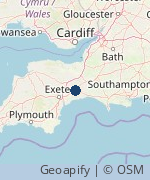"The Battle of Britain Outside of London" (RAF Exeter's role in the conflict)
Brian Fernley
- Organisation:
- South West Airfields Heritage Trust
- Region:
- South West
- Notice Period:
- Emergency (maybe less than one week's notice)
- Type:
- Charity
- Fee:
- Paid: £75 for local talks, travel expenses will be added over 15miles
- Category:
- History
- Updated:
- 9th December 2022
- Tagged:
Much has been written about the Battle, most of which is centred around London, which to point is understandable. However, there was action in other parts of the country. We look at the involvement of the Exeter based squadrons and their role in proceedings, the tragedy of friendly fire incidents.
Roland Beamont, the test pilot for the ill-fated TSR2 aircraft served with 87 squadron, at Exeter, during the battle. He recorded his reminiscences of the Battle for the Imperial War Museum which are used as part of the talk.
We learn of the luck of the Australian pilot who scored the first aerial "kill" for his country.
Views: 1014 | Enquiries: 1About Brian Fernley
I spent most of my working life in the telecommunications industry, starting as an apprentice, then moving into design. From there I joined the training department eventually becoming the UK Technical Training Manager for Siemens Communications. Throughout my career I enjoyed giving presentations and it was something he wanted to continue into retirement.
I've always been interested in aviation history and have had several opportunities to develop my knowledge; which including writing an interactive guide for Newark Air Museum and involvement with aviation archaeology.
After moving from Nottingham to Devon I became aware of the South West Airfields Heritage Trust, an educational charity whose purpose is to inform the public of the south-west’s aviation heritage. This is done in a number of ways, most visibly they have heritage centres at Dunkeswell and Smeatharpe, which are open to the public from Easter until the end of October. They also give talks, visit schools, hold events and look after a number of local memorials.
I have become an enthusiastic volunteer, contributing to both heritages centres and now regularly deliver talks on their behalf.
Send a message to the speaker
If you are interested in this talk and wish to contact the speaker, please complete the following form:

